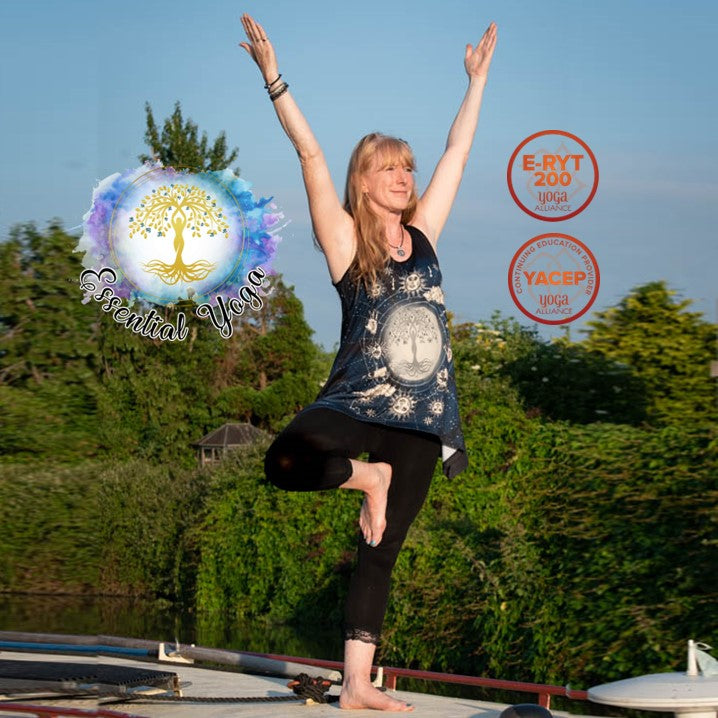New Moon Yoga - Child’s Pose
Child’s Pose for the New Moon. Balasana invites quiet reflection—perfect yoga for new moon energy. This gentle pose soothes the mind while stretching the back, hips and legs. A simple way to pause, reset, and turn inward.
Let’s explore Child’s Pose, or Balasana in Sanskrit.
This is a pose for the new moon, inviting us to be a little more introspective, to find calm, to close ourselves off a little from the outside world. The time of the new moon is great for reflection and review, so this pose helps us to draw inwards and give ourselves time to regroup, to collect ourselves together.
It’s not just perfect for the new moon, it’s also great at any time when you need to withdraw a little, take a break, to have a quiet moment during a longer yoga practice.
As well as the emotional break this pose gives us, it also helps our backs with a big stretch out of our lower back muscles and our glutes (bottom muscles). It works our hip and knee joints deeply, and stretches the front of the leg, including the ankle if the top of the foot is along the floor. We can also use the pose to stretch our arms and shoulders, or we can find a more restful option for the arms.

Child’s pose

Close up of Child's pose on the New Moon Yoga Print by Moon Phase Studios
How to find Child’s pose
We get into the classic version of this pose by kneeling down, untucking the toes so the tops of the feet rest on the floor, and then folding down over the knees, sending the hips and tailbone back and down towards the heels, easing the head towards the floor. We’re aiming to send the hips as far away as possible from the head, gently deepening the position with every breath. Maybe drawing the tummy in as you breathe out will help find a bit more space to fold a bit deeper.
You can extend the arms out, palms spread wide and elbows engaged, for a more focused option. Or the arms can be sent back along the sides, hands towards the feet. Another option is to extend the elbows forward but bend them and bring the hands back to prayer position behind the neck.


Arm variations of the pose.
Other Options
Give yourself permission to find a variation of this pose that works for your body. Keeping toes together but taking the knees out really wide can help accommodate your front body more easily, and using a cushion or rolled up blanket between the back of the thighs and the calves will reduce the amount of compression in the knees while still allowing you to release the back. If the feet don’t want to lie flat you can tuck your toes under or place a small towel or blanket under the front of the ankle.


Wide-knee and supported variations of the pose.
If getting down on the floor is not for you, then this pose can be taken sitting in a chair. Plant feet firmly below the knees and fold forwards from the hips. The same wide-kneed and arm options can be taken.


Chair-based variations of the pose.
How to breathe in the pose
You’ll find that the front body is a bit compressed in this pose, which can be good for digestion, but may well mean you’ll need to focus on breathing through the side and back ribs, rather than by using the chest and front ribs. Tune in to your breathing while in this pose and see if you can feel that shift to the back ribs. See how deep, slow and even you can breathe here. Try to breathe in and out through the nose.

New and Full Moon Yoga prints from Moon Phase Studios
Moving on
To come out of this pose gently roll up through the spine – taking your time so you don’t feel dizzy. Shift your hips over to unfold your legs gently too, taking your time to stretch and move. Maybe some little windscreen wiper moves with bent knees here will feel nice.
Alternatively you can move to the next pose in a sequence, such as Rabbit pose.
Make sure you always look after yourself when doing yoga.
It’s important to always listen to your body and only work within your personal limitations. You are fully responsible for your own safety and wellbeing. Make sure your surroundings and your practices are safe. Do not attempt to take a physical posture that is outside of the scope of your practice. If you have any specific medical conditions, injuries, surgeries or are pregnant you should check with your GP or appropriate medical professional before starting any exercise. Keep in mind that yoga might be challenging at times, but it should never be painful. You must stop if you experience any pain, and you should consult your GP if you experience anything untoward such as dizziness or feeling faint. Rest or leave anything out that you need to avoid or that does not feel right.
Louise xx
About Louise Handy
Louise Handy is an Experienced Registered Yoga Teacher and Yoga Alliance Continuing
Education Provider, providing yoga classes, courses and workshops. She delivers regular information, hints and tips in the Moon Phase Studios newsletters, helping individuals to discover, develop or continue their own yoga-based wellbeing practice in a way that is right
for them, and aligned with the Wheel of the Year. Louise also provided poses and written content for the Moon Phase Studios yoga prints.
Louise offers a rounded approach using not only physical poses, but also breath-work and meditative techniques to find a harmonious balance of body, mind and spirit. She enjoys providing practical tools to help unwind and find serenity in everyday life as well as “on the mat”, and specialises in yoga nidra, a non-physical practice generating a state of deep conscious relaxation, as well as hatha, vinyasa flow and yin styles of yoga.
You can find out more about Louise’s work via www.essentialyoga.uk and by following her on Facebook or Instagram


